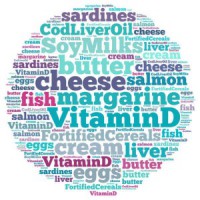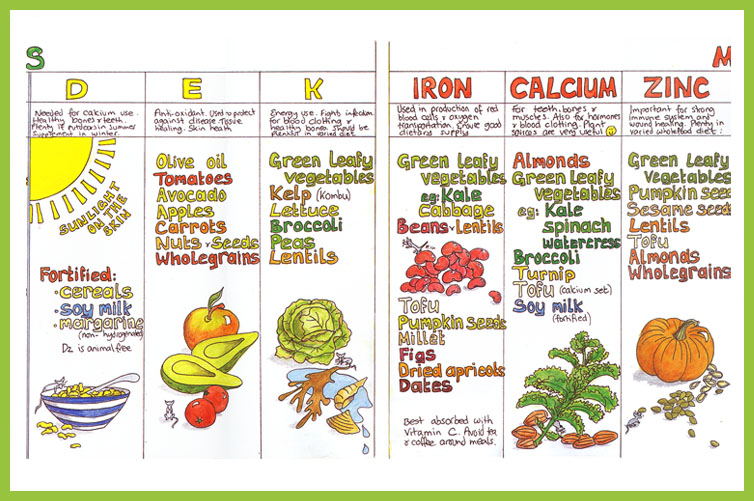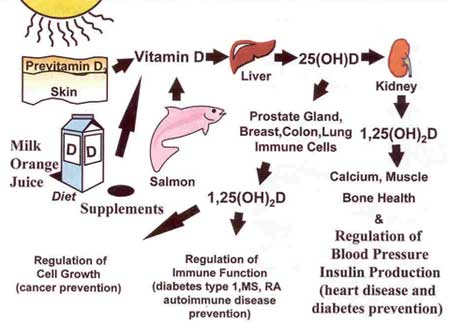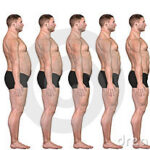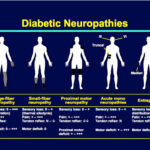Vitamin D is a fat soluble vitamin which is not excreted through kidneys unlike the water soluble vitamin . Over the past 6 years, Vitamin D has caught the attention of both patients and health care providers alike.
Causes of deficiency:
• Animal based products are richer in Vitamin D in comparison to vegetarian diet.
• Those who spend more time indoors.
• Those using a lot of sun block lotions.
• Those with dark skin absorb less.
• Obese people absorb less.
• Elderly people are more prone as they spend less time outdoors, kidneys do not work well, the skin will not absorb sunshine effectively.
• Some people have digestive tract problems which will not help in absorption. Those with Crohns` disease, cystic fibrosis and Celiac disease are known to have associated Vitamin D deficiency.
In the Muslim population wearing of the ” Abhaya” by the women which covers the whole body as well as the men who wear long robes can prevent sunshine falling on the body. This robe is helpful against the harsh sunlight in the middle east.
Vitamin D deficiency is quite common among the middle East population as they prefer spending more times indoors. Vitamin D deficiency is quite common in the USA or UK because of lack of effective sunlight.
A study was conducted in Hawaii among 93 people who spent an average of 29 hours a week in the sunshine without sun block. Interestingly, slightly more than half of them had low levels of vitamin D !!!.
Sunshine is a good but unreliable source of vitamin D. The vitamin D inactive form absorbed from the intestine and skin are converted to the active form in the kidney.
Dietary Sources of vitamin D
• Fish and fish oils
• Egg yolks
• Fortified dairy products including milk, cheese, yoghurt, buttermilk. Most of the calcium containing food and beverages can be fortified with vitamin D.
• Grain products
One tablespoon cod liver oil contains 1360 IU of vitamin D
3 oz salmon contains 800 IU vitamin D
8 oz fortified milk contains 100 IU vitamin D
8 oz fortified orange juice contains 100 IU vitamin D
Check the nutrition labels for the vitamin D levels which will be entered into the DV ( Dietary value) section.
Assessment of vitamin D levels
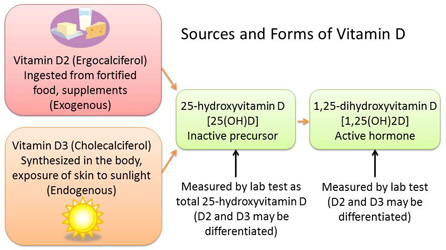
Laboratory assays for vitamin D measurement are highly variable from laboratory to laboratory. Different standardizations are there in different labs.
Ordering the test is to be done after careful deliberation by the health care team.
Interpretation of the results
< 10 ng/mL Deficient
10-30 ng/mL Insufficient
30-100 ng/mL Sufficient
>100ng/mL intoxication
How is Vitamin D produced in the body?
Effects of low vitamin D levels
• In children, the bones become soft- called Rickets
• In adults, the bones become fragile and altered in shape which is prone for fractures- called osteomalacia.
• Low levels are found linked to cancer of breast and prostate, high blood pressure, diabetes mellitus type 1 or 2, asthma, depression, unexplained weakness and muscle fatigue, multiple sclerosis, rheumatoid arthritis.
Treatment of low levels:
- Maintenance -Vitamin D is available in tablet forms combined with calcium (available as an over-the-counter form). This is given in those who have near normal levels.
- Intensive– Vitamin D is available as capsules or sachets or even injection forms. This is used for treatment of those with low levels.
Like calcium, this vitamin is a threshold nutrient which means, once levels are normal, any excess ingestion will not be of any benefit. All of the vitamin D cannot be absorbed from the intestines. But, there is no easy test to measure the rate of absorption.
International governing bodies from around the world have recommended the following needs of vitamin:
• Infants up to 6 months of age need 400 Units a day and safe limit not more than 1000 IU a day
• Infants aged between 6 and 12 months need 400 units daily and safe limit not more than 1500 IU a day
• Children between 1-3 years- 600 units a day and not more than 2500 IU a day.
• Children between 4 and 8 years 600 Units daily and safe limit not more than 3000 IU daily
• Those between 9 and 70 years, 600 units a day and safe limit not more than 4000 IU daily
• Those above 70 years 800 units daily and not more than 4000 IU daily.
• Pregnant and breast feeding ladies need 600 IU daily.
Magnesium has a huge role in absorption of vitamin D from the intestines. Soya beans, black beans, sesame seeds, green leafy vegetables and dark chocolate are good sources.
Spending quality time outdoors in sunshine such as playing at the beach, getting a whiff of fresh air or going for a swim will definitely make one more energetic rather than remaining indoors. But, too much of sunshine can also predispose to cancer of the skin .










